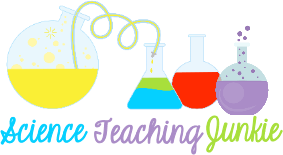Try this! Make at least 5 observations about the picture below. Now, make at least 2 inferences based on those observations.
One of the most valuable skills young scientists need to develop is the ability to make careful observations based on what they see. These are based on factual evidence and key details. Often times, the brain automatically jumps to conclusions based on previous life-experiences, so you must teach young scientists to eliminate these biases and focus on the difference between an observation and an inference. Observations must be factual and are collected using the five senses. Inferences are conclusions based on those collected observations. Teach your students that their inferences must be justified and explained using the collected observations.
Over the past few weeks, I've been working on a product that will help you build better scientists. It's called "Observe and Infer with Picture of the Week". It is something that is simple to incorporate into your weekly schedule and if used consistently, you will begin to see better critical thinking, observing, inferring, writing, reading and speaking. What teachers doesn't want that?
Making detailed observations takes time. Incorporate this activity into your weekly routine, so students come to expect it. I would recommend that you begin the year, completing the Observe & Infer activity as a class, and gradually move to small groups, partners, or individuals as students become more comfortable and grasp the concept. Even if you choose to have your students work individually, it is still important to continue giving your students the opportunity to share their observations and inferences with at least one other classmate. I have included a student print-out that you may wish to use in the beginning to reinforce the expectations, but as the year progresses, you may wish to eliminate the print-outs and have students record their observations and inferences in their Interactive Science Notebooks.
This year-long activity will not only strengthen the observation and inferencing skills of your young scientists, but it will also make them better speakers, readers, and writers - your language arts teachers will love you! Teach your students to:
· speak and write in complete sentences
· justify your inferences with evidence from the picture (tell your inference/thinking followed by “because” and then your justification)
· Agree/disagree with your classmates (respectfully) and explain why you agree/disagree
· Use correct punctuation and grammar
What you get: 38 weeks of Observe and Infer pictures, student print-outs for all 38 weeks, 38 picture of the week slides for display in both PDF and PowerPoint formats.






No comments:
Post a Comment